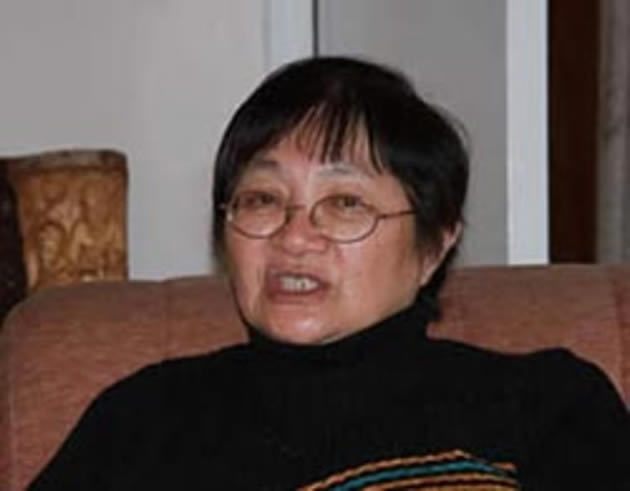Chung examines Look East Policy

Lovemore Ranga Mataire The Reader
Former Minister of Education, Fay Chung has emerged as one of the most prolific authors of her generation in the post-colonial era particularly on issues to do with the education sector.
Her recent output, “Zimbabwe Looking East” (2015) is a must-read for those seeking a better understanding of the country’s foreign policy shift to the East in the wake of ruinous economic sanctions imposed by the West.
Her book is more than just an examination of the effectiveness or ineffectiveness of the country’s foreign policy in the post-Zimbabwe Democracy and Economic Recovery Act (ZIDERA) era which issued from the fast-track land reform programme.
The book takes the reader on a historical journey of China from the Middle Ages to the post-Mao Zedong era where leaders focused more on economic development and equality rather than communist dogmas.
The distinctiveness of the book is in its author whose narrative is authenticated by her personal history as a Zimbabwean national of Chinese descent.
She further derives her legitimation from her participation in the liberation struggle and her active role in the making of a new nation in the early years of independence.
As an academic, Chung definitely took her time in ensuring that authorial intrusion will not take hold of her narratives as evidenced by various footnotes and actual historical references to authenticate certain points or deductions.
Chung’s autobiography is interestingly interlinked with Zimbabwe’s trajectory from colonialism to independence. She was educated at Leeds University in England where she obtained a Masters Degree in English Literature. It was at Leeds that she met Jack Straw who was later to become Foreign Secretary in the Labour Party government and Claire Short, later renowned for her retrogressive decision to stop British support for land reform and resettlement that precipitated the fast-track land reform programme.
She later returned to Africa, Zambia where she taught English Literature at the University of Zambia. Her political views and Marxist inclination were fashioned in Zambia where she interacted with several nationalists who had fled the then Rhodesia.
In 1975, she joined the liberation struggle as a ZANU cadre during the détente period brokered by American Henry Kissinger.
At independence, Chung participated in the expansion of the education system from a third of children at primary and 4 percent and 65 percent for secondary school. She later served as Minister of Education and later as Minister of State for Employment Creation.
In “Looking East”, Chung eloquently explains the reasons behind Zimbabwe looking east.
While she highlights that the policy was a knee-jerk reaction, she also acknowledges the apparent benefits that have so far accrued to the country’s ties with China. Chung makes it clear that the decision by Zimbabwe to turn East rattled most Western nations that would have wanted the country to economically crumble and render the rule by the Zanu-PF Government ineffectual and untenable.
The uniqueness of the book is its reliance on actual historical material to explain a particular epoch. Chung gives background of the Look East Policy so that any reader has a general idea of what informed its enunciation.
“The genesis of this book is the policy enunciated by President Robert Mugabe in 2002 when Western sanctions were imposed on Zimbabwe, as characterised by the Zimbabwe Democracy and Economic Recovery Act (ZIDERA) passed by the United States. Whilst this was an emotional ‘gut instinct’ response, it also indicated political astuteness,” says Chung in her preface to the book.
On the Chinese history since the Middle Ages up to when communists led by Mao Zedong took over power, Chung provides raw data that clearly shows the arduous journey that the Asian country has trudged on including its various experiments with various existential models different from the Washington Consensus or the Western capitalist model which emphasise democracy and private ownership of the means of production.
In her narrative of the Chinese history, Chung debunks the notion of a closed country that is inhospitable to foreigners and notes the contributions of particular foreign nationals to the Chinese revolution.
Notable individuals include Norman Bethune (1890-1939), a Canadian medical doctor who worked at the front as part of the Communist Party of China’s Eight Route Army, Gearge Hatem aka Ma Haide (1910-1988), an American medical doctor of Lebanese origin, who became the first foreigner to be accepted in the Communist Party and worked hard in the elimination of leprosy and many venereal diseases in China after 1949, and Agnes Smedley (1892-1950), born to poor parents in United States and migrated to China where she was a journalists and penned several books in support of the Communist Party of China.
In evaluating Zimbabwe’s Look East policy, Chung looks at the historical relations between China and the then Soviet Union and its impact on Africa. It is her fervent view that the relationship between the Chinse Communists and the Soviet Union influenced what happened in some African countries particularly in Zimbabwe where the two main liberation movements were supported by the two countries. China supported ZANU while ZAPU got its support from the Soviet Union.
Some readers however may find Chung’s focus on the influence of the Chinese on the ZANLA military wing very dreary but this is an essential detail that explains why it was convenient for the ruling ZANU PF to resort to the East when “push comes to shove.”
In a nutshell, Zimbabwe Looking East is more than just a technical examination of Zimbabwe’s foreign policy in the aftermaths of the economic sanctions imposed on the country but is rich on history as well.
It is after all an appreciation of the Chinese history, including tracing Zimbabwe’s relationship with the Asian nation that one understands the current state of amiable relations between the two nations.










Comments